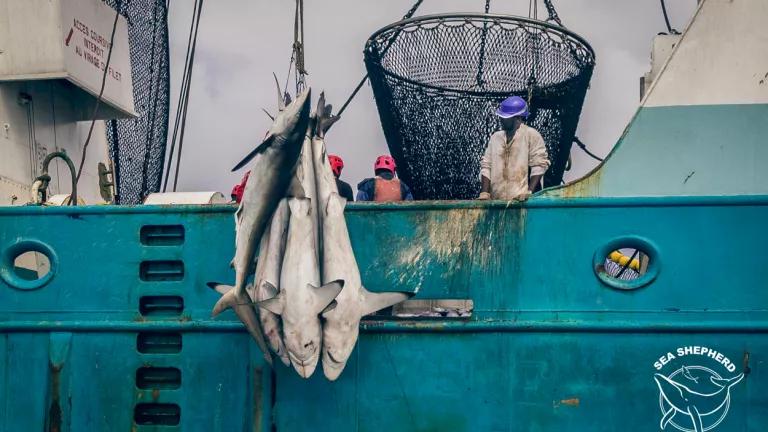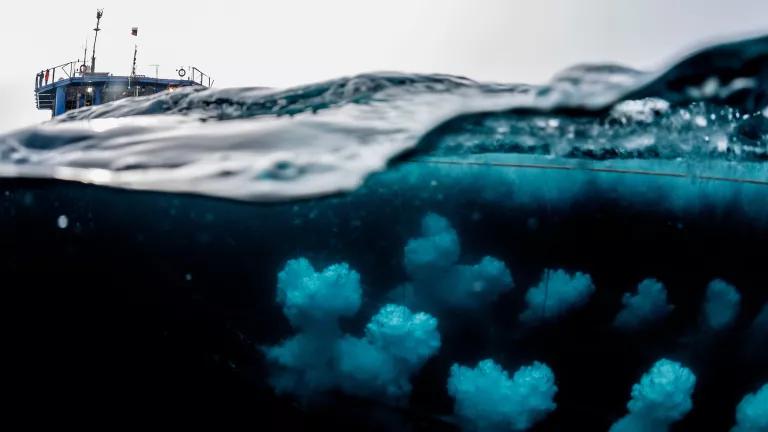Orcas Lose a Grandmother, Matriarch L47
This Saturday is Orca Recovery Day and people are coming together for some healing—and to demand action.

A pod of Southern Resident killer whales
Another grandmother in the L pod of the Southern Resident orca population is likely dead, the Center for Whale Research reported last month, and people are coming together across the Pacific Northwest region for some healing and hands-on action this Orca Recovery Day. If you live in Washington or Oregon, you can find events near you as well as learn about simple actions you can take for orcas and a healthier Salish Sea for wildlife and all of us.
Matriarch L47 (or Marina) was 47 years old and is the second Southern Resident orca to die this year. The critically endangered orcas recently reached their lowest population level in 40 years. “When I began my career with the Southern Residents, there were nine grandmothers and two great-grandmothers. Today, only three grandmothers remain,” said Cindy Hansen, education coordinator for Orca Network and a member of the Orca Salmon Alliance in a recent statement.
Grandmother orcas, like human grandmothers, provide significant documented benefits to their offspring and grand-offspring. For orcas, grandmothers support the pod directly by cooperative foraging, sharing food, and imparting important ecological knowledge. The benefits that grandmother orcas provide are most important in difficult times when the availability of salmon is low. And the loss of another grandmother now is especially concerning.

Dr. Deborah Giles and author on a research vessel in the Salish Sea
“The loss of an older female is a tremendous loss of knowledge and leadership for the population,” said orca scientist Dr. Deborah Giles, a professor and marine mammal research biologist, who has dedicated her life to studying these whales. Giles is intimately familiar with the whales and their individual personalities, collective culture, and common habits. The orcas just seemed “off” this summer, Giles told me recently.
Giles reports the orca families are more fragmented than they used to be, swimming in smaller groups, and that they are also just not sticking around to play, hunt, and socialize in the inland waters. Giles can recount—to the day—when the different orca pods left for the coastal waters and returned to the Salish Sea this summer. This was the first time in recorded history that the Salish Sea went more than 100 days without J pod.
The cause of L47’s disappearance is unknown, but we know her grand-offspring and all three orca pods’ members are too often nutritionally stressed and malnourished. Recently, there was good news that three J pod orcas are pregnant, including J19 (or Sachi), who is 42 years old and herself a grandmother. But the lack of sufficient Chinook salmon to eat across these whales’ range is a major factor in the orcas’ unusually high miscarriage rate. About 70 percent of orca pregnancies end in miscarriage. Once an orca calf is born, its chances of survival remain precariously low. In 2018, the world watched J35 (or Tahlequah) push her deceased newborn calf for 17 days and 1,000 miles on a tragic journey of grief. L47 herself lost at least four of her calves over her lifetime.
NOAA Fisheries has identified the Southern Resident orcas as a “Species in the Spotlight,” one of nine endangered species at immediate risk of extinction. Washington State’s Governor Jay Inslee convened a Southern Resident Orca Recovery Task Force a few years ago, dedicated to identifying solutions to the threats facing the beloved orcas and their primary prey and has remained committed to these species. Yet, despite federal and state level recognition of the perilous struggle for existence that these whales face, the orcas continue to decline.

The single-greatest decline in salmon abundance across the orca’s range has been in the Columbia River Basin, which was once the richest salmon-producing river system in the world. As the Columbia River and the Snake River have become increasingly industrialized, polluted by oil and hot waters, and dammed by hydropower, too many of the fish have gone. The impact of that loss is truly beyond measure—not just for the orcas, but foremost for the region’s many tribes, who have been stewards of these rivers and fish since time immemorial. Losing salmon is a social justice and climate resilience issue that hurts all of us.
It’s time for people across the Pacific Northwest to take action and put our hands to work to support a healthier, more connected relationship with the waters that sustain us. If we show up together in ways small and big—from beach cleanups to holding our elected officials accountable—we can help save this magnificent species, heal our rivers, and secure a brighter future for orca and human grandkids alike.




